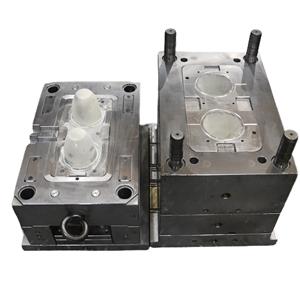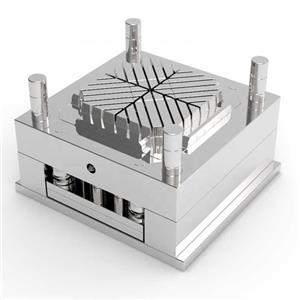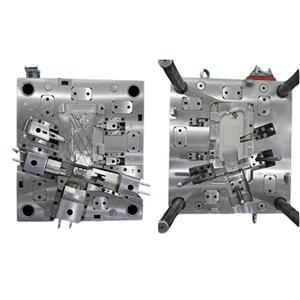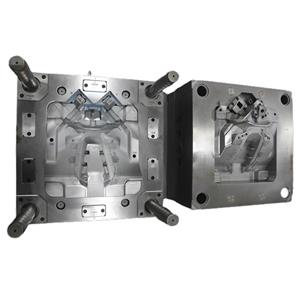Automotive Bumpers A Deep Dive into Safety Features and Aesthetic Appeal
The Evolution of Bumper Design and Safety
The history of the automotive bumper is a story of incremental improvements driven by ever-increasing safety standards. Early bumpers were primarily rudimentary metal bars, offering minimal protection. The focus was largely on preventing minor scratches and dents. However, as vehicle speeds increased and the understanding of collision dynamics advanced, so too did bumper technology. The introduction of energy-absorbing materials like plastic and foam revolutionized bumper design, allowing for controlled deformation during low-speed impacts, minimizing damage to the vehicle and mitigating the forces transferred to the occupants.
Modern bumpers are far more complex. They're often comprised of multiple layers: an outer cosmetic cover, usually made of painted plastic for aesthetic reasons; a reinforced structural component; and energy-absorbing materials like polyurethane foam. This multi-layered approach allows for a balance between visual appeal and effective energy absorption. The design also takes into account the crumple zones of the vehicle, ensuring that the energy from an impact is channeled away from the passenger compartment.
Safety Features: Beyond the Basics
Beyond their primary function of absorbing impact energy, modern bumpers incorporate numerous safety features. Many include integrated sensors for advanced driver-assistance systems (ADAS) like parking assist, automatic emergency braking, and adaptive cruise control. These sensors utilize ultrasonic, radar, or lidar technologies, enabling the vehicle to detect obstacles and respond accordingly. The strategic placement of these sensors within the bumper is crucial to their effectiveness and reliability.
Furthermore, pedestrian safety is a paramount concern in modern bumper design. The leading edges of bumpers are often designed with rounded profiles and softer materials to reduce the severity of injuries in pedestrian collisions. Some advanced bumpers even incorporate deployable pedestrian protection systems that further mitigate the impact. These systems can include airbags or pop-up structures that cushion the impact and reduce the risk of serious head injuries.
Aesthetic Appeal: Shaping the Vehicle's Identity
While safety remains the primary function, the aesthetic contribution of bumpers is undeniable. They significantly influence a vehicle's overall appearance, contributing to its brand identity and market appeal. Designers meticulously craft bumper shapes, integrating them seamlessly with the rest of the bodywork to achieve a cohesive and visually striking design.
The choice of materials and finishes also plays a crucial role in aesthetic appeal. High-gloss paints, matte finishes, chrome accents, and other styling elements are used to enhance the visual impact. Furthermore, the integration of LED daytime running lights (DRLs) and fog lights into the bumper design has become a common trend, enhancing both safety and aesthetics. These lights not only improve visibility but also serve as key stylistic features, adding a contemporary touch to the vehicle's face.
Material Science and Manufacturing
The materials used in bumper construction are constantly evolving. High-strength steels, aluminum alloys, and advanced plastics are employed to optimize the balance between weight, strength, and cost. The manufacturing processes are also sophisticated, often utilizing techniques such as injection molding for plastic components and robotic welding for metal parts. The precise engineering and manufacturing processes ensure consistent quality and reliable performance under diverse conditions.
Research into new materials and manufacturing techniques is ongoing, with a focus on developing lighter, stronger, and more sustainable bumpers. This includes exploring the use of composite materials and recycled plastics to reduce environmental impact and enhance recyclability at the end of a vehicle's lifespan. The drive towards improved sustainability is influencing the design and manufacturing of bumpers as manufacturers strive to meet evolving environmental regulations and consumer expectations.
The Future of Automotive Bumpers
The future of automotive bumpers promises further integration of advanced technologies and materials. We can expect to see even more sophisticated sensor integration, enabling more advanced ADAS features and autonomous driving capabilities. The use of lightweight and high-strength materials will continue to grow, leading to improved fuel efficiency and enhanced safety. Furthermore, the aesthetic design will continue to evolve, reflecting changing consumer preferences and technological advancements.
Ultimately, the automotive bumper's journey demonstrates the continuous interplay between safety engineering and design innovation. As technology continues to advance, the seemingly simple bumper will likely become even more sophisticated and crucial to the overall safety and aesthetic appeal of future vehicles. Its evolution is a testament to the relentless pursuit of safer and more stylish automobiles.




